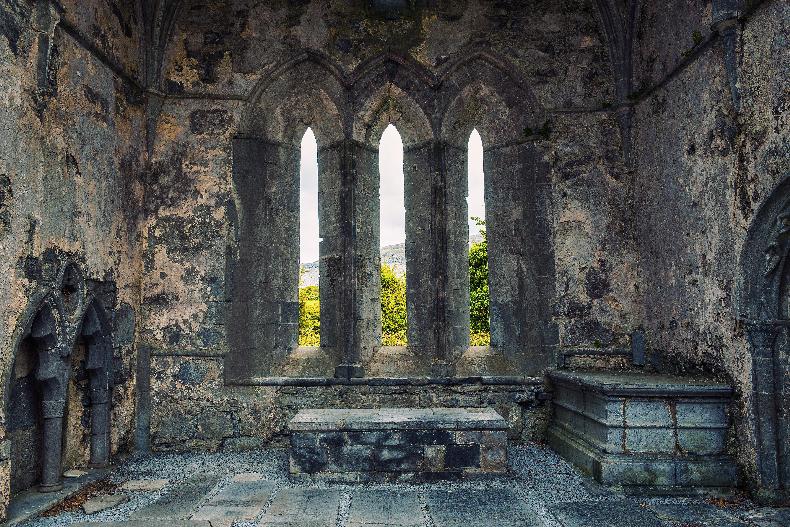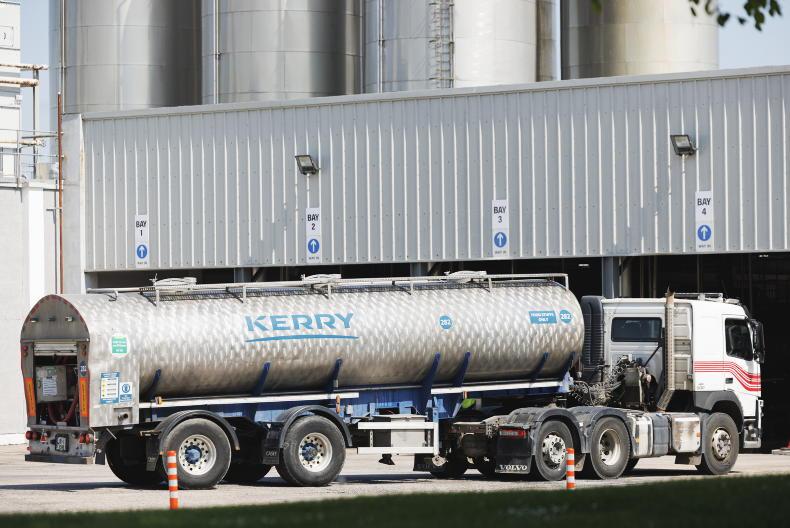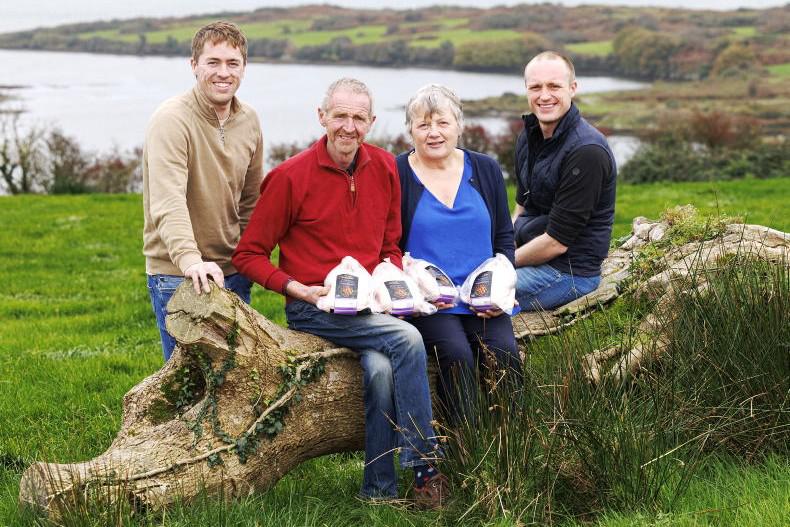Dr Susan Flavin is associate professor in the School of Histories and Humanities at Trinity College. She is also the principle investigator in a five-year, ERC-funded (European Research Council) research programme dubbed FoodCult, which looks at the way people ate and drank in Ireland circa 1550-1650. The programme has been held up slightly due to COVID-19, but is now in its second year and progressing well.
Expanding Irish food history
Considering Irish food history; the Great Famine is likely the most prevalent event to come to mind. According to Susan, however, this early modern period is of equal importance; representing a shift in the understanding and approach to food in Ireland – and it’s a time on which we have little information.
“[In this era], we see new worlds being discovered, new foods and big new ideas in terms of when you should fast and feast," she explains.
“We tend to study famine a lot, because Ireland has such a troubled history with food but in recent years, we started to study food from other cultural perspectives."
Feast or famine?
While this period saw great societal change, it is difficult to study. Written records of grand feasts in places like Dublin Castle remain, but there are very few describing what regular Irish people – or “peasants” – ate.
People appreciated a fart joke back then the same way they do now
Most often, references to the peasant diet were written satirically; depicting disgusting images of animals’ trotters, black bread, “dirty” bacon or “filthy” butter.
“People appreciated a fart joke back then the same way they do now,” Susan explains. “While funny, these are not actual descriptions of diet. [What we need to do] is find the balance here and fill in the gaps.”
Closer to God
As mentioned, lavish feasts are well-referenced. Influenced by the style of the Tudor court, these grand banquets displayed the wealth and status of the host and used a variety of ingredients - often featuring interestingly “philosophical” dishes.
“People believed [at the time] you are what you eat," Susan says. "There was this idea that animals which flew in the sky were closer to God, and if you ate these things you became more noble by eating them; while peasants should stick to coarser ingredients from closer to the ground."

Part of the Foodcult programme includes recreating beer that would have typically been consumed in the mid-1500s/1600s in Ireland. \ Susan Flavin
Multidisciplinary approach
A large part of the FoodCult programme has been to create a food map of Ireland representing this time period. The research team – comprised of Dr Meriel McClatchie, Dr Julie Dunne, Professor Janet Montgomery, Dr Fiona Beglane, Dr Shreepali Patel, Laureen Buckley, and Dr Ellen O’Carroll – takes a multidisciplinary approach; piecing together gaps in information through historical analyses and archaeological data.
Everyday diets
By studying the remains of artefacts, humans and animals, the team are able to get ideas of the general health and diet of the population, as well as which types of animals were being farmed. Through archival research, they can piece together the cultural aspects of what life was like. Susan says this team approach has been effective.
“We're making lots of progress; it’s very exciting,” she says. “As an historian, I rely heavily on the expertise of the archaeologists; we have a very different approach. Through historical records, we get lots of detail but little scope, [whereas] in archaeology, you get scope, but not detail."
Dirty details
Archaeology will help answer questions in relation to the actual peasant diet of this era. For example, the team are performing lipid analyses, which will show what kinds of foods were being cooked from fat residue left on cooking utensil artefacts.
The evidence suggests, in the years before colonisation, Ireland was very much a part of the wider Atlantic economy
Many might assume Ireland’s food culture changed during this time from a British colonisation influence. In fact, Ireland was already enjoying a diverse food culture, as a result of global trade.
“The old-fashioned view of Ireland as this insular society, with a distinct diet [which suddenly changed when] the English came over – that’s not the case at all," Susan says. “The evidence suggests, in the years before colonisation, Ireland was very much a part of the wider Atlantic economy. Lots of the new trends which affected the English diet also affected the Irish diet – well before we were colonised.”
Strange concoctions
A surprising result of FoodCult's research has been how women of this era ensured the health and wellness of their families through the use of food. Records show elite women, in particular, were skilled in the art of distillation and Susan has noted some of their more interesting concoctions.
“When you read these descriptions, you get the sense of women making these very elaborate distillations with strange foods to care for their families,” she says. “Mushing up snails and distilling them to make a water for children, for example. Food and health were much more deeply connected in this period.”
Irish witchcraft
In the spirit of Halloween, ICL asks: as in other regions, were there witches on trial in Ireland during this time?
“The Irish didn’t have a very strong belief in witchcraft, unlike other parts of Europe,” Susan laughs. “‘Butter witches’, though, seem to have been an exception. Irish witches were partial to stealing butter and could magically divert cow’s milk from neighbouring herds to their own.”
Farming in the 1600s
Part of the FoodCult programme has included an attempt at recreating a 16th century-style Irish beer, which research shows was different to its English counterpart and used a high concentration of oats. Dublin farmer Dominic Gryson (cornstownhouse.ie) specialises in growing heritage grain and has been providing the team with oats for their research.
Through the study of animal bones, the team hope to discover (both from an agricultural and nutritional view) if cows got bigger as agricultural improvements took place in the 16th century. They also hope to look at dairying practises during this time, as well as regional variations in tillage. For example, were particular parts of Ireland growing more oats than barley and wheat?
Keep up to date with the project at
foodcult.eu
Dr Susan Flavin is associate professor in the School of Histories and Humanities at Trinity College. She is also the principle investigator in a five-year, ERC-funded (European Research Council) research programme dubbed FoodCult, which looks at the way people ate and drank in Ireland circa 1550-1650. The programme has been held up slightly due to COVID-19, but is now in its second year and progressing well.
Expanding Irish food history
Considering Irish food history; the Great Famine is likely the most prevalent event to come to mind. According to Susan, however, this early modern period is of equal importance; representing a shift in the understanding and approach to food in Ireland – and it’s a time on which we have little information.
“[In this era], we see new worlds being discovered, new foods and big new ideas in terms of when you should fast and feast," she explains.
“We tend to study famine a lot, because Ireland has such a troubled history with food but in recent years, we started to study food from other cultural perspectives."
Feast or famine?
While this period saw great societal change, it is difficult to study. Written records of grand feasts in places like Dublin Castle remain, but there are very few describing what regular Irish people – or “peasants” – ate.
People appreciated a fart joke back then the same way they do now
Most often, references to the peasant diet were written satirically; depicting disgusting images of animals’ trotters, black bread, “dirty” bacon or “filthy” butter.
“People appreciated a fart joke back then the same way they do now,” Susan explains. “While funny, these are not actual descriptions of diet. [What we need to do] is find the balance here and fill in the gaps.”
Closer to God
As mentioned, lavish feasts are well-referenced. Influenced by the style of the Tudor court, these grand banquets displayed the wealth and status of the host and used a variety of ingredients - often featuring interestingly “philosophical” dishes.
“People believed [at the time] you are what you eat," Susan says. "There was this idea that animals which flew in the sky were closer to God, and if you ate these things you became more noble by eating them; while peasants should stick to coarser ingredients from closer to the ground."

Part of the Foodcult programme includes recreating beer that would have typically been consumed in the mid-1500s/1600s in Ireland. \ Susan Flavin
Multidisciplinary approach
A large part of the FoodCult programme has been to create a food map of Ireland representing this time period. The research team – comprised of Dr Meriel McClatchie, Dr Julie Dunne, Professor Janet Montgomery, Dr Fiona Beglane, Dr Shreepali Patel, Laureen Buckley, and Dr Ellen O’Carroll – takes a multidisciplinary approach; piecing together gaps in information through historical analyses and archaeological data.
Everyday diets
By studying the remains of artefacts, humans and animals, the team are able to get ideas of the general health and diet of the population, as well as which types of animals were being farmed. Through archival research, they can piece together the cultural aspects of what life was like. Susan says this team approach has been effective.
“We're making lots of progress; it’s very exciting,” she says. “As an historian, I rely heavily on the expertise of the archaeologists; we have a very different approach. Through historical records, we get lots of detail but little scope, [whereas] in archaeology, you get scope, but not detail."
Dirty details
Archaeology will help answer questions in relation to the actual peasant diet of this era. For example, the team are performing lipid analyses, which will show what kinds of foods were being cooked from fat residue left on cooking utensil artefacts.
The evidence suggests, in the years before colonisation, Ireland was very much a part of the wider Atlantic economy
Many might assume Ireland’s food culture changed during this time from a British colonisation influence. In fact, Ireland was already enjoying a diverse food culture, as a result of global trade.
“The old-fashioned view of Ireland as this insular society, with a distinct diet [which suddenly changed when] the English came over – that’s not the case at all," Susan says. “The evidence suggests, in the years before colonisation, Ireland was very much a part of the wider Atlantic economy. Lots of the new trends which affected the English diet also affected the Irish diet – well before we were colonised.”
Strange concoctions
A surprising result of FoodCult's research has been how women of this era ensured the health and wellness of their families through the use of food. Records show elite women, in particular, were skilled in the art of distillation and Susan has noted some of their more interesting concoctions.
“When you read these descriptions, you get the sense of women making these very elaborate distillations with strange foods to care for their families,” she says. “Mushing up snails and distilling them to make a water for children, for example. Food and health were much more deeply connected in this period.”
Irish witchcraft
In the spirit of Halloween, ICL asks: as in other regions, were there witches on trial in Ireland during this time?
“The Irish didn’t have a very strong belief in witchcraft, unlike other parts of Europe,” Susan laughs. “‘Butter witches’, though, seem to have been an exception. Irish witches were partial to stealing butter and could magically divert cow’s milk from neighbouring herds to their own.”
Farming in the 1600s
Part of the FoodCult programme has included an attempt at recreating a 16th century-style Irish beer, which research shows was different to its English counterpart and used a high concentration of oats. Dublin farmer Dominic Gryson (cornstownhouse.ie) specialises in growing heritage grain and has been providing the team with oats for their research.
Through the study of animal bones, the team hope to discover (both from an agricultural and nutritional view) if cows got bigger as agricultural improvements took place in the 16th century. They also hope to look at dairying practises during this time, as well as regional variations in tillage. For example, were particular parts of Ireland growing more oats than barley and wheat?
Keep up to date with the project at
foodcult.eu










SHARING OPTIONS